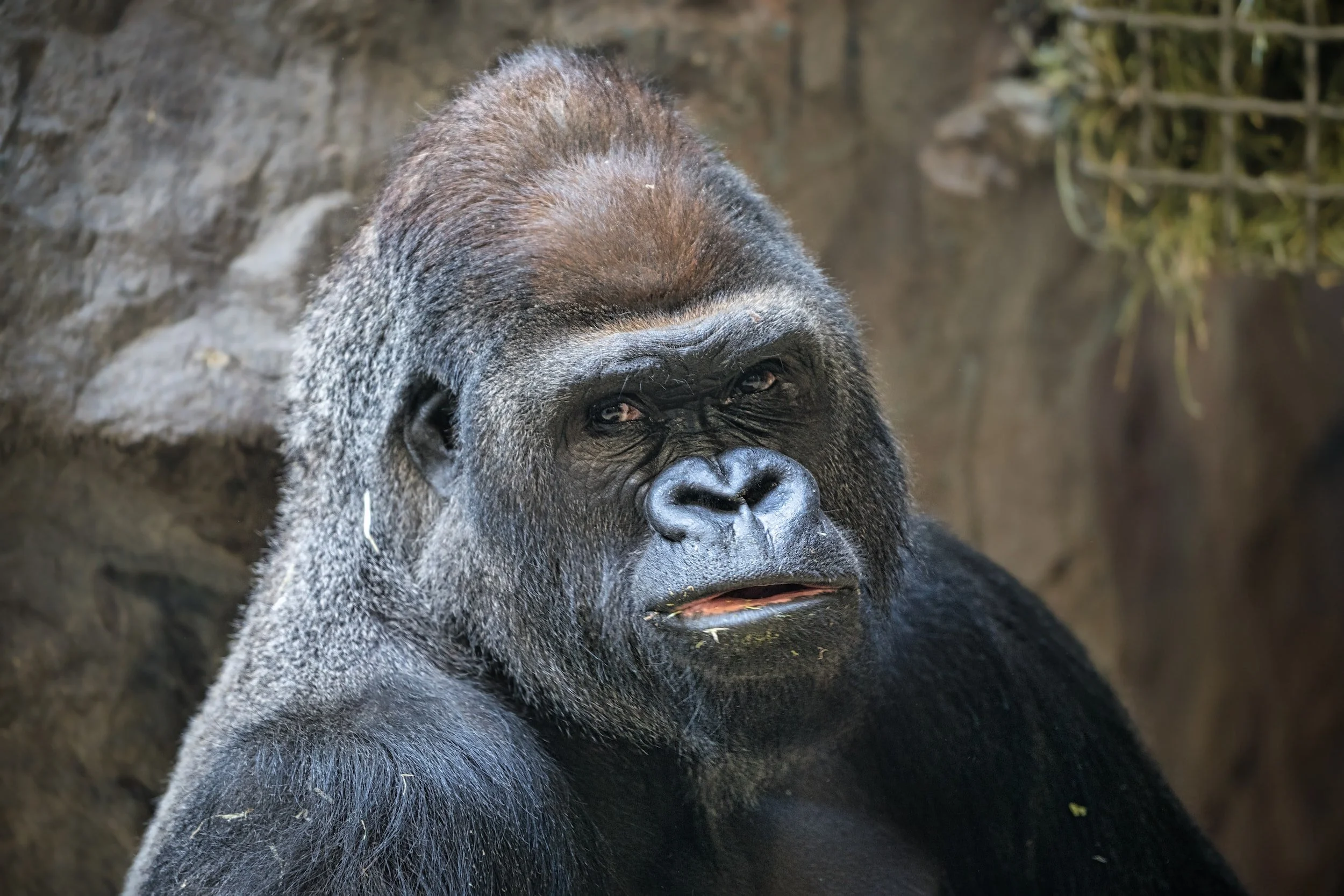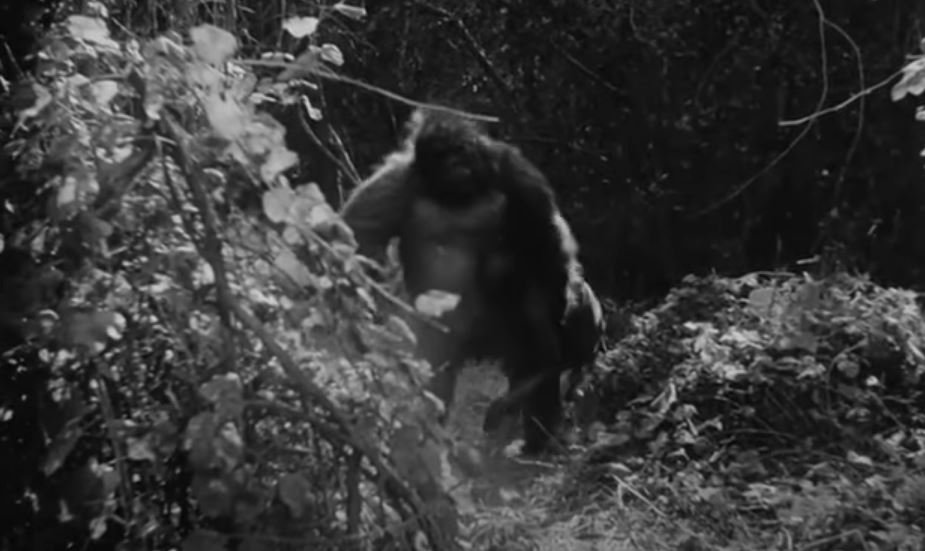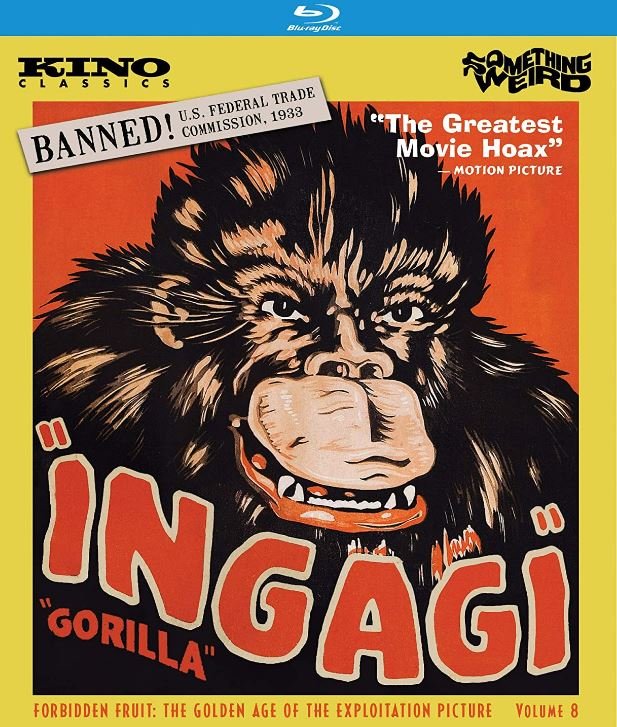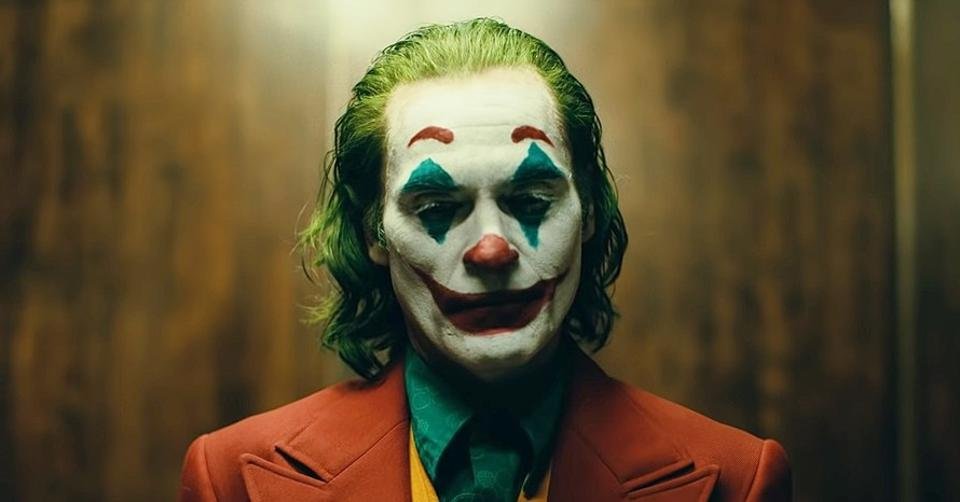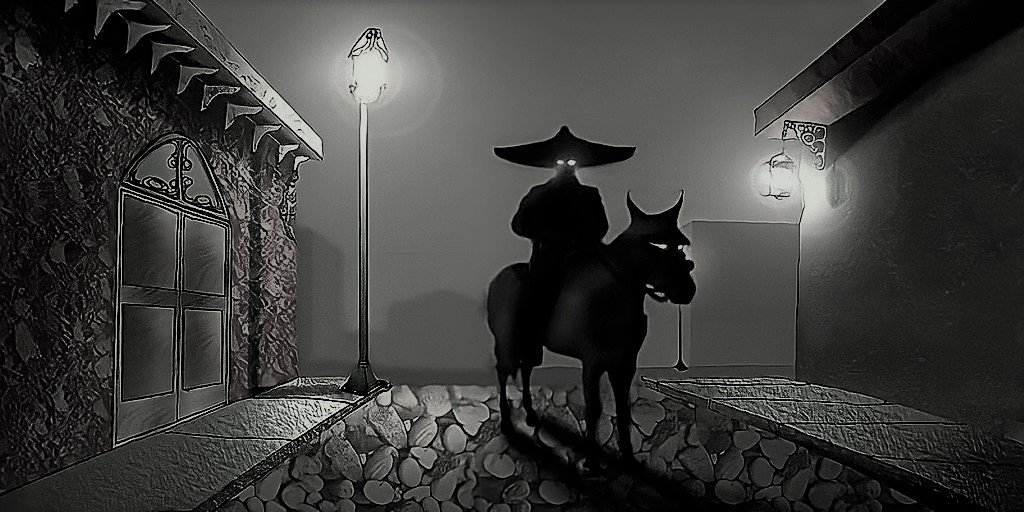Ingagi: The “Documentary” Banned by the FTC
In the early 20th century people were infatuated with films, radio serials, and books about Africa and exploring its vast lands and animals. You had 1915’s Heart of Africa; a film by big game hunter Lady Grace Mackenzie, and the 1910 book African Game Trails by Theodore Roosevelt which detailed his year-long expedition/hunt in Africa where he killed over a thousand animals.
Did I say “exploring” Africa’s land and animals? I meant murdering.
But people were also infatuated with anything to do with gorillas and monster movies. At the time there weren’t a lot of zoos that had an ape/gorilla exhibit but, there were a lot of films and radio shows featuring them. Anything that had a rampaging ape was going to be a success.
In 1930, three years before King Kong’s debut, the production company Congo Pictures touted a new documentary that was sure to wow audiences. It was advertised as a “real” and “authentic” documentary of the Belgian Congo (present-day Republic of the Congo). But it also featured a ritual performed by a tribe that worshipped gorillas and a new species of human that was half-man, half-gorilla.
It’s a real documentary… I swear!
The Definitely Real and Totally Legit Documentary
The film opens with a text crawl telling the audience they’re about to watch the thrilling adventure of Sir Hubert Winstead and his team’s two-year expedition into the darkest regions of Africa.
This is followed by a longer text crawl that would make Star Wars jealous telling us that during the expedition, Winstead, Captain Swayne, and the camera team heard an unbelievable tale. The story was of a tribe that annually gave one of its women to a group of gorillas known as the Ingagi as part of a tradition.
Apparently, years ago, the tribe was attacked by the gorillas and in order to placate them, the tribe offered up one of the women. This quelled the attack and the natives believed that this meant their gods required them to ritualistically give the gorillas a woman yearly. Feels like a huge leap in logic but okay.
“He looks angry… I nominate Karen as a sacrifice!”
So Ingagi starts off pretty dramatic and then gets incredibly boring, yet, I feel like Netflix would have found a way to stretch this out for ten episodes so I’m grateful it’s only 80 minutes. After several scenes of hunting animals, trekking through Africa, and meeting people from several villages; the group stumbles upon a brand new species- the tortadillo!
The narrator, who I think is Winstead, tells us Captain Swayne spotted the creature just minding its own business conveniently near a camera. They then found out it was poisonous when it snapped at a dog and the dog died moments later. Since it looked like a cross between an armadillo and a tortoise, they named it the tortadillo.
“Armadillos are those things that have wings right?”
Finally, at the 63-minute mark, we get to the main point of this documentary, Ingagi. The group hears about the legend and set off to find proof of it with the help of several from a local village. After some wandering around they find “Ingagi country” and search for signs of a tribe of women and their gorilla mates.
Eventually, they spot several naked women followed by a gorilla but, we don’t get a clear view as the camera is in the brush. The narrator tells us one of the women was holding a child that appeared to be half-man, half-gorilla but once again we don’t get a clear view. Winstead’s group follows the gorilla and eventually throws a net around it but it’s too strong and escapes.
That night, while making camp, Winstead and his group discover that it’s conveniently the night the local tribe performs a ritual where they choose a woman to be sacrificed. This has got to be the luckiest documentary crew right?
The next morning the group record the naked woman waiting to be taken by the Ingagi. Sure enough, an Ingagi arrives, picks the woman up, and runs.
Yep, that’s totally a real gorilla and not a guy in a suit, trust me.
The group chase after it and eventually shoot it causing the totally real ape and not a guy in a suit to charge at them. Winstead shoots it several times, killing it, and saving the woman. The film ends with one final text crawl thanking the audience.
Release, Reactions, and Censorship
Ingagi was released independently on March 15, 1930, but Congo Pictures was brand new and could only afford to play it at one theater. After a marketing campaign that assured the film was real, it premiered in San Diego and was an immediate success.
The next stop was Chicago’s Garrick Theatre where, once again, Congo Pictures advertised it as “an authentic incontestable celluloid document showing the sacrifice of a living woman to mammoth gorillas!”
Unsurprisingly people’s curiosity peaked and the movie was a hit once again. This led to more bookings at more theaters with Ingagi eventually making around $1 million or around $17.8 million in today’s money. But as the old wise saying goes, “ mo’ money, mo’ problems.”
“I don’t know, this money would solve around 95% of my problems.”
See, back in 1915, the Supreme court ruled that the right to free speech didn’t extend to movies. This meant that states could ban certain movies from playing in their theaters and several created their own censorship boards to determine this.
In 1922, the Motion Picture Producers and Distributors of America (MPPDA) was formed, today it's known as the Motion Picture Association (MPA) because it took some time for people to realize that longer titles mean people lose interest immediately. I don’t even remember what MPPDA stands for and I just wrote it out.
The MPPDA’s president William Hays first job was to clean up Hollywood as it was seen as an unregulated and scandal-driven media industry.
The fear was that if movies didn’t somehow self-regulate and self-censor, then the government would have to step in which was completely allowed because of the Supreme Court decision. In order to avoid federal censorship, Hays had to somehow get all the studios and films to agree to some kind of self-censorship standard.
Now Hays couldn’t tell states how and when to censor movies but he could give the studios recommendations on how to make films to avoid censorship in each state. Unfortunately, the states kept their individual rule books a secret so Hay’s had to make his recommendations blind.
“What- No, the pages aren’t blank, the rule book totally exists, it’s just… a secret!”
Between 1922 and 1930 there’s a lot of stuff that happens and several attempts to impose these rules but none of that is entirely relevant to Ingagi so let’s skip some stuff. In 1930 Hays lays out the “Production Code” which would eventually become known as the “Hays Code” and studios reluctantly agree to follow them. This meant “immoral” movies could not be shown at studio-owned theaters and, guess which movie was considered immoral.
Ingagi Versus Hays and The MPPDA
Due to the nude women and the implication that there was a sexual relationship between the woman and the Ingagi, Ingagi was deemed immoral and recommended to be banned. Multiple studio-owned theaters dropped the movie from their bookings but, this was actually a plus for Ingagi. Now, Congo Pictures could advertise the movie as one that is banned and controversial and people love that shit.
Independent theaters were also ecstatic because they could show Ingagi with less competition during a time when everyone wanted to watch it. Obviously, William Hays wasn’t happy about this and after hearing some rumors about Ingagi possibly not being authentic, the MPPDA launched an investigation.
Meanwhile, some independent theaters changed course and started dropping Ingagi. They realized that if they ignored the MPPDA then that would sour their relationship with studios. With no relationship with the studios, independent theaters would be unable to show future studio releases at their locations.
In June 1930, the MPDDA discovered that Ingagi was in fact, fake. Hays revealed the film was actually shot in California, New York, and a studio in Hollywood. This caused further theaters to drop the film but Nat Spitzer, president of Congo Pictures, denied the allegations and claimed the film was 85% authentic.
According to Spitzer, some scenes were shot in a zoo but only to get some transition shots, everything else was real.
The MPPDA Backs Down
By the end of June 1930, William Hays rescinded his ban on Ingagi and essentially claimed there was never a ban in place as it was up to the theaters to decide whether to show it or not. Why the sudden change of heart?
Remember how independent theaters had to stop showing Ingagi in fear that the major studios would stop sending them movies to show? Well, since several major studio executives worked together with Hays to enforce the rules, independent theaters felt that was unfair and akin to a monopoly. Congress tended to agree and monopolies are a big no-no so Hays backed down from declaring an official ban.
“Guys, I never said ‘Ingagi is banned’, I said ‘I’m an Ingagi stan’”
But the damage was already done, first by the “unofficial” ban then by the claims it was fake. This caused Congo Pictures to lose out on a lot of money. In July 1930 they filed a $3 million lawsuit against the MPPDA for lost revenue. But that wasn’t the only damage caused by the MPPDA.
The FTC Steps Up
After Hay’s report alleging Ingagi was fake, others started taking a closer look. The Better Business Bureau and the Federal Trade Commission (FTC) launched their own investigations. Many other organizations like The Humane Society, Campfire Girls of America, several women’s clubs, and the American Society of Mammalogists called for the film to be boycotted or flat out called it fake.
It was then revealed that several shots of the animals in Africa were actually stolen from Grace Mackenzie’s Heart of Africa. Mackenzie’s son filed a lawsuit against Congo Pictures and won $150,000 in October 1930. That same month the Hays Office met with actor Charles Gemora who signed an affidavit admitting that he was the Ingagi gorilla in a costume.
Finally, the FTC released its findings and revealed all of Ingagi was fake. The report detailed that there was no Sir Hubert Winstead or Captain Swayne, neither man had ever existed. Nothing had been filmed in Africa, everything was in fact filmed at zoos in California and in a studio.
The people from the villages were actually actors, including the gorillas who were just men in suits. Several scenes of animals were stolen from previous films. The tortadillo was a fake and was actually a turtle with a scale, tail, and wings glued onto it. One scene that involved a lion was actually a trained lion who had appeared in various other films.
“I freaking knew turtles couldn’t fly.”
Most of what the FTC reported was already known or rumored but this gave it an air of legitimacy and they declared Ingagi was "false, fraudulent, deceptive and misleading"… too bad the report didn’t come out till 1933! Barely anyone was showing the film at the time because it was old news, the new Kong on the block was King Kong so no one actually cared.
But the FTC did sanction and send Congo Pictures a “Cease and Desist” order. This effectively banned Ingagi until Congo Pictures removed all advertising or claims saying the film was authentic or real. Congo Pictures, instead, just removed the film from circulation entirely.
Legacy
The FTC’s sanction was eventually lifted in 1947 but the film was not put back into circulation. In fact, many believed the film was lost and would never be shown again but in January 2021 film distributors Kino Classics released the film on Blu-ray. It’s also on YouTube which you can find by checking the sources below.
One last thing to note is in 1930 some of the theaters where Ingagi performed best were owned by RKO Radio Pictures. Seeing the success of the gorilla-led film, RKO Radio Pictures greenlit King Kong which was an immediate success. Thankfully RKO Radio Pictures knew not to advertise King Kong as real or authentic.
Quick Facts
Son of Ingagi was released in 1940 and although the title alludes to it being a sequel, it has nothing to do with Ingagi
Willaim Hays's first attempts at standardizing the film industry didn’t work, the first attempt was called “The Formula” and the second attempt was called “The Don’t and Be Carefuls”
Though the Hays code stuck, it was mocked when first released due to the “victorian” era type rules such as no nudity, no suggestive dancing, and no excessive and lustful kissing, etc.
Some sources claim Hays banned Ingagi because the MPPDA found out it was fake and not because it was “immoral” but other sources say the revelations were after it was deemed immoral. Because the Hays Code wasn’t properly enforced it’s possible it was requested to be banned and later fully banned.


